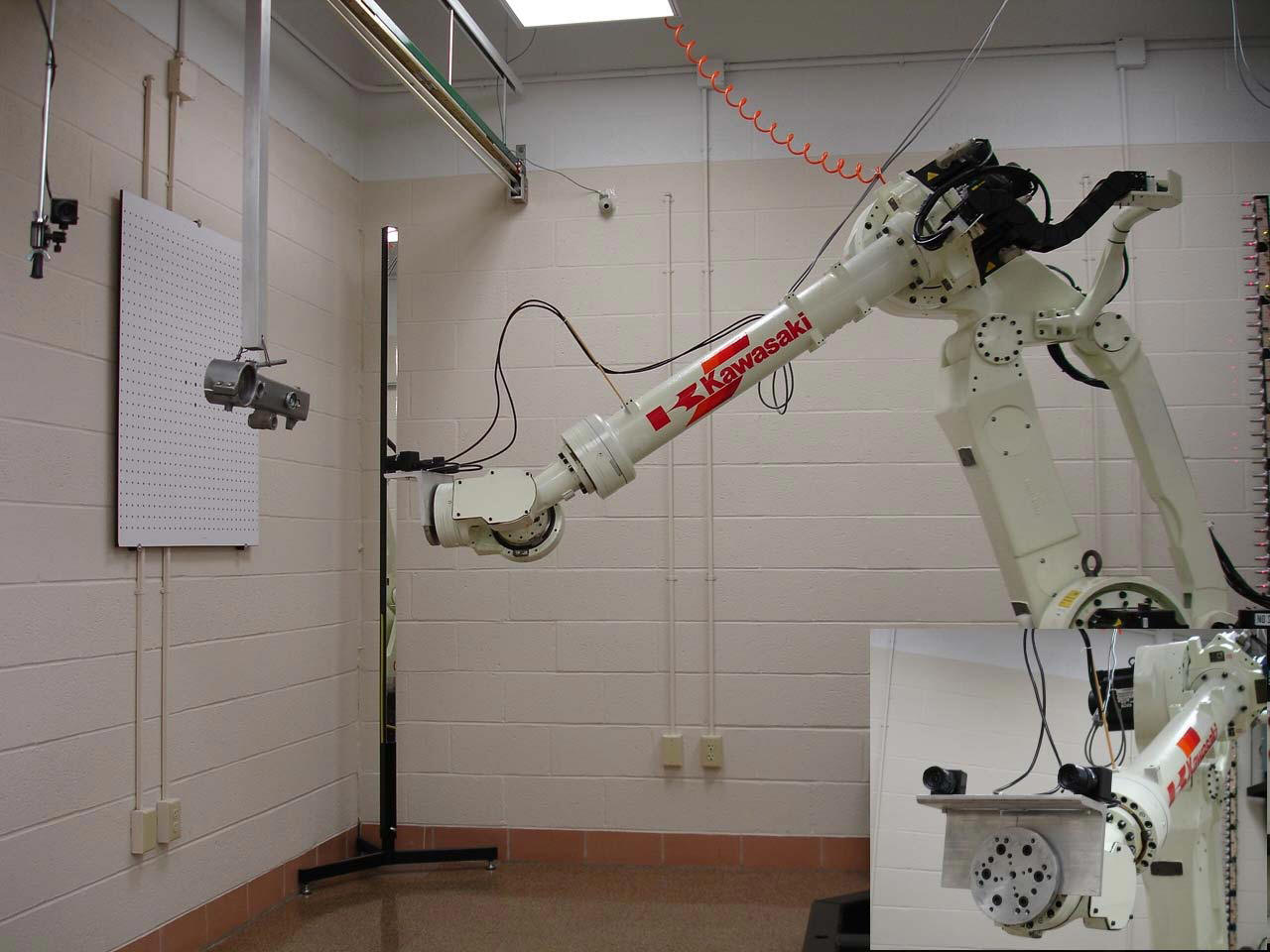Evan Dong



Introduction
Any control system using visual-sensory feedback loops falls into one of four categories. These categories are derived from choices made regarding two criteria: the coordinate space of the error function, and the hierarchical structure of the control system. These choices will determine whether the system is a position-based or an image-based system, as well as if it is a dynamic look-and-move or a direct visual servo.
In our work, we present an image-based, dynamic look and move visual servoing system. The difference between our approach and other popular ones is in the use of quaternion representation, which eliminates the potential singularities introduced by a rotational matrix representation.
Results
This visual servoing system was tested in real Kawasaki robot. Specifically, the system was tested in three different scenarios: pure linear motion, pure angular motion and hybrid motion.
A. Pure linear motion
B. Pure angular motion
C. Hybrid motion
Reference
T. Koeing, Y. Dong and G.N. DeSouza. Image-based Visual Servoing of a Real Robot using a Quaternion Formulation. IEEE International
Conference on Cybernetics and Intelligent System, Robotics, Automation and Mechatronics. (2008)